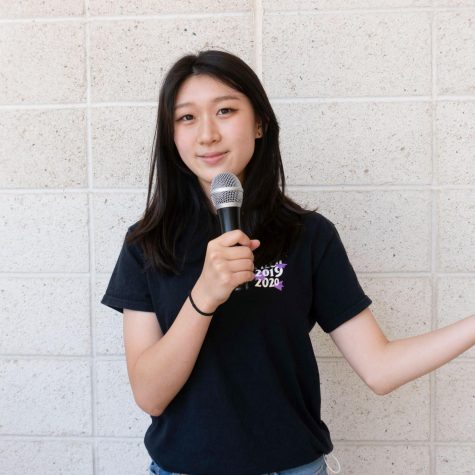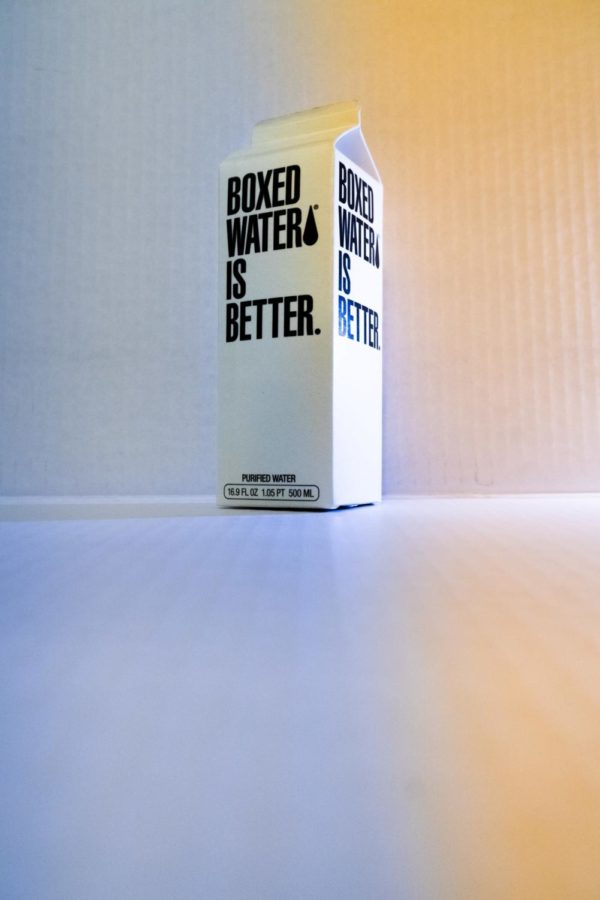Boxed Water Takes a Small Step in Reducing Carbon Footprint
Novel rectangular carton makes its bold appearance in the cafeteria aisles.
Using metal straws and hydroflasks, students have recently followed the rising trend of reducing plastic waste. Irvine Unified School District hopped on the bandwagon this year, swapping out plastic bottled water for boxed water, which claims to be better for the environment according to its own label.
The main motive behind the district’s choice to implement boxed water is based on environmental reasons according to Cynthia Prunty, Portola High’s food service supervisor. She claimed that despite having the option to recycle, students would often throw away the plastic water bottles in the trash. In fact, 91% of the plastic water bottles produced are not recycled, according to National Geographic.
“[With boxed water], there’s going to be so much plastic that won’t be used, just like [how] we discontinued using straws,” Prunty said. “For a student that really didn’t need it or was going to take two sips of it and then throw it [away], we’re hoping that with the boxed water and students being charged, they will be more conscientious.”
Although the school gained 499 students, the school saw a decrease in the purchase of water, according to Prunty. She suggested that more students are bringing their own water bottles after this change was made.
The integration of boxed water brought controversy regarding whether the differing taste from standard bottled water is worth paying for.
“I do not like boxed water [because] it tastes like cardboard,” sophomore Naria Alam said, “but I can see why this is a better upgrade . . . I see plastic lying around, and it’s terrible.”
Despite the unfamiliar taste, some students understand the purpose behind the change and support the district’s decision.
“It is a small step, but I think that small steps lead to bigger steps in the future. It’s a good idea,” Alam said.
Your donation will support the student journalists of Portola High School. Your contribution will allow us to purchase equipment and cover our annual website hosting costs.

Junhee Ryu is one of your business managers for the 2019-2020 cycle. Going into his final year with the Pilot, he is excited to make a lot of money so...

Bia Shok is the co-news editor for her third and final year on the Pilot! She is super excited to expand the Pilot’s influence even further this year...

William Hsieh is your 2019-2020 Front Page Editor. He has previously served as the Director of Photography last year. He likes photography and graphic...




